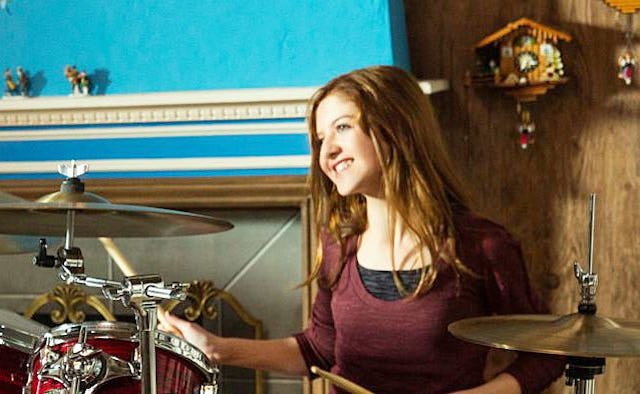'A History of Radness,' For Tweens, Is Really For Gen-X Parents

If you want to get to the kids, you’ve got to please the parents. Consider the popularity of Sesame Street and its inside jokes for the older viewers, or even Dan Zanes’ success with his folk music that adults will sing along with. And so arrives A History of Radness, Amazon’s new music show for tweens, which seems explicitly designed to hit all the nostalgia buttons of the Gen-X parents of these tweens.
The story opens with Tessie and Jack, who appear to be about 13, prime angst age. They recently moved from Seattle to Pleasant Meadows, a nondescript town in an unnamed Middle America state, and are unhappy and suspicious of their bland, small-town classmates. (“But the real estate is really cheap and the schools are good!” I can hear their parents mumbling. “Do you know how much a house costs in Seattle?”)
Tessie and Jack, like all Seattleites, know that the key to happiness is a band, and they’re eager to assemble one to replace the Skype jam they’ve been making do with since they parted from their old bandmates. They hold auditions for a bass player and have to go with the least-bad of the bunch, a know-it-all weirdo cellist who’s eager to branch out; they bring her on board and reluctantly accept her suggestion for the band’s name, The Outsiders (paging Matt Dillon!). With bass, drums and guitar taken care of, they’re set.
But while on latrine duty—punishment for skipping cross-country practice—Jack finds himself scrubbing toilets with the middle school bad boy, Judd. With the longish hair, smoldering gaze and still-waters-run-deep of many an ’80s rom-com heartthrob, Judd is clearly a nod to The Breakfast Club and Say Anything. There’s even a faint whiff of Silver Spoons about him. (I found myself Googling the SS character J.T. Martin, Ricky’s tough guy friend, to find out whatever happened to that actor.)
But this is a show about music, after all, and the boys play a hilarious game of H-O-R-S-E in the boys’ bathroom in which they have to sing an octave on pitch before slam-dunking a wad of paper towel in the trash can. Jack discovers that Judd has a great voice and brings him home to Tessie as the newest member of their band.
Even the song the episode closes with is kind of like Nirvana meets Green Day with a few lyrics by the Goo Goo Dolls—anyone who came of age in the grunge era will find themselves nodding along with the bass line and searching their house for their old plaid shirt collection. The voiceover of grown-up Jack is even a little reminiscent of Northern Exposure, like A History of Radness writers created a collage of cultural references for people born between 1970 and 1980 and pieced them together as the backdrop for a kids’ show.
That’s cool. We want our kids to love what we love, after all. Nostalgia is just a way of remembering what was good about our generation’s culture—and a lot of the ’80s and ’90s was really good. So, good, in fact, that it’s enough to make me get my band back together.
This article was originally published on